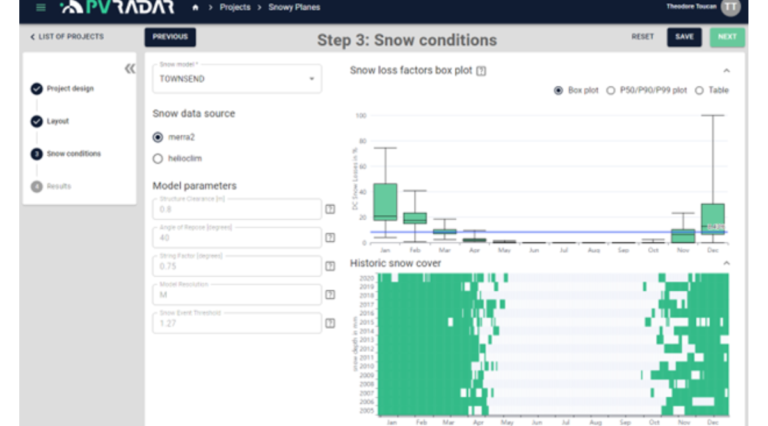PVRadar Labs has expanded its software platform to include PV project risk assessment functionality, reportedly enabling more realistic performance estimates based on historical climate data.
PVRadar Labs, a Germany-based software company, has expanded the functionality of its PVRadar software platform and added the ability to model utility-scale project performance using climate data, in addition to pollution and cleaning optimization.
“By using PVRadar, developers can conduct a proper risk assessment and take into account snow loss, pollution or albedo effects. It is especially useful for European or American developers entering new geographic markets, because the climate data is global,” said Thore Müller, co-founder and CEO of PVRadar Labs. pv magazine.
“Originally the software was set up to optimize cleaning costs for PV modules at an early stage of planning, but we discovered that many of our customers struggled to correctly determine loss factors for yield estimation. Typically they use simple tools such as Excel spreadsheets, but there is a clear need for accurate forecasts based on historical conditions, such as rainfall, snowfall and particulate matter.”
PVRadar provides historical climate data going back twenty years. It is based on Geographic Information Systems (GIS) sources and on national weather databases, where available. “We saw that for some project inputs there is verifiable data available to developers, such as the price of the modules provided by manufacturers, or the performance characteristics provided by testing laboratories. But this did not apply to climate-related effects and loss factors. That is why project developers all too often rely on general assumptions, for example by assuming a pollution loss of 2%, which in many arid areas has no relation to reality,” says Müller.
The platform complements internal workflows and commercially available design tools, such as PVCase, PVFarm, PVDesign or PVSyst. According to Müller, it offers users realistic input of loss factors.
Access to the platform comes in two variants: a single project license or a corporate subscription for an unlimited number of projects. “We have twelve project development companies that use the platform for multiple projects. That’s because developers typically review many more sites than they end up developing. It could be ten designs for each project being built,” says Franco Clandestino, co-founder and head of product. pv magazine.
Looking ahead, the team is working on additional risk assessment tools. “We will continuously add more models, for example due to the degradation rate, and we will also allow users to create their own models and feed them from our database,” said Müller.
This content is copyrighted and may not be reused. If you would like to collaborate with us and reuse some of our content, please contact: editors@pv-magazine.com.


